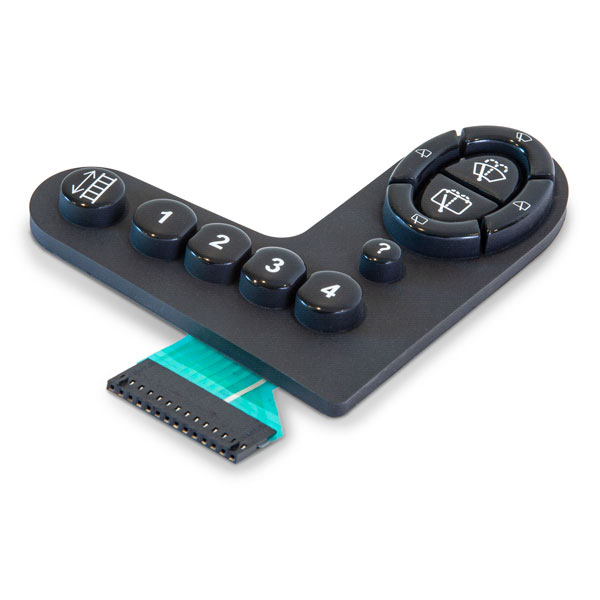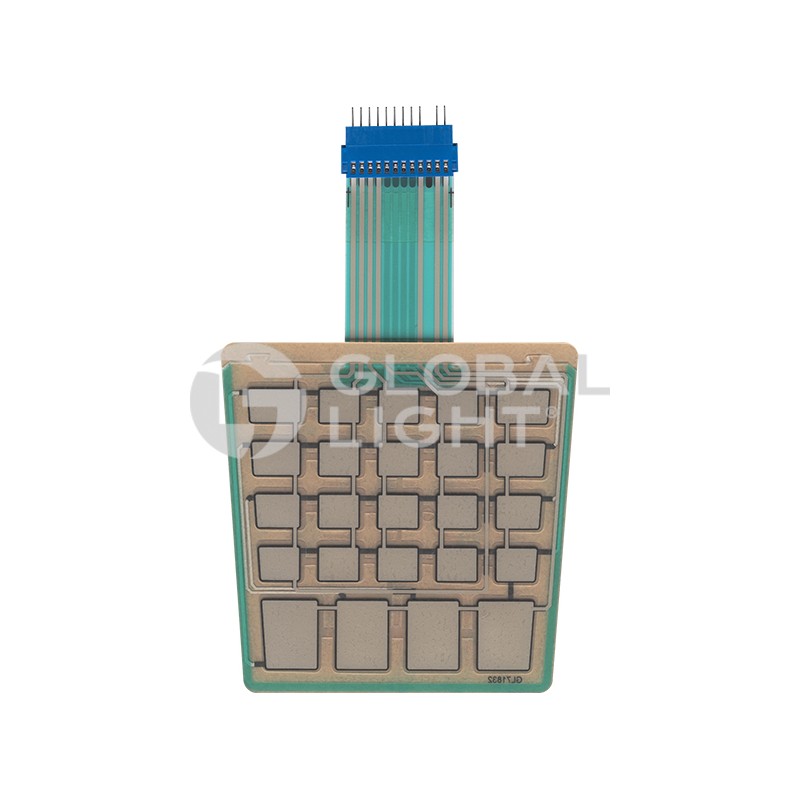Membrane Switch: Reliable, Cost-Effective, and User-Friendly Control Systems
Membrane Switch: Reliable, Cost-Effective, and User-Friendly Control Systems
Blog Article
The Advantages of Using Membrane Switches in Customer Electronics
Membrane layer switches are increasingly acknowledged for their considerable advantages in customer electronic devices, specifically in enhancing user communication and simplifying manufacturing processes. The convenience in design enables for customized options that satisfy diverse consumer needs.
Enhanced User Experience

In today's competitive landscape of customer electronics, boosted customer experience is critical; virtually 85% of individuals prioritize intuitive user interfaces. Membrane layer changes play an essential duty in attaining this level of use.
The tactile comments supplied by membrane buttons is important for leading customer activities, making sure that commands are registered precisely. This responses device heightens and decreases errors customer fulfillment, fostering a positive relationship between the tool and the user. Additionally, the customizable nature of membrane switches over allows manufacturers to tailor user interfaces to specific user demands, making gadgets extra available and welcoming.
Furthermore, membrane layer buttons can incorporate backlighting and visuals overlays, better boosting visibility and usability in varied settings. This adaptability ensures that gadgets stay useful and user-friendly, regardless of the setup. On the whole, the integration of membrane switches right into consumer electronic devices dramatically boosts customer experience, driving brand name loyalty and complete satisfaction in an increasingly open market.
Cost-Effective Manufacturing
Customer electronics producers are continuously seeking methods to balance high quality with affordability, and membrane buttons provide a compelling solution for cost-effective manufacturing. These components are naturally easier than conventional mechanical buttons, which reduces both manufacturing expenses and complexity. The lightweight style of membrane switches permits reduced shipping expenses and less complicated assimilation into compact gadgets, additionally improving their appeal in an open market.
Makers can generate membrane buttons in high quantities, making use of economies of range. This mass production capacity makes sure consistent top quality while dramatically reducing per-unit costs. In addition, the products utilized in membrane layer buttons, such as polyester and polycarbonate, are commonly cheaper than those needed for conventional button technologies, adding to overall price savings.
The production procedure for membrane layer switches over generally calls for fewer steps and much less labor compared to various other switch types. This structured method not just reduces labor expenses yet also increases time-to-market, allowing business to react promptly to customer demand. Subsequently, the combination of decreased product expenses and reliable manufacturing procedures placements membrane switches as a wise financial investment for producers intending to deliver top notch customer electronics at competitive cost factors.

Layout Adaptability and Personalization
While standard mechanical buttons typically enforce restrictions on layout as a result of their bulk and needed mounting devices, membrane switches give exceptional adaptability and modification options for customer electronic devices. This innovative technology enables designers to develop sleek, low-profile user interfaces that can flawlessly incorporate into different product aesthetics, from mobile phones to cooking area devices.
Membrane switches can be generated in practically any type of form or dimension, making it possible for producers to customize the format to details ergonomic and why not try here functional requirements. This versatility not just boosts customer experience yet additionally permits for imaginative layouts that straighten with brand name identification. The usage of published graphics on membrane layer changes supplies the opportunity for intricate designs and vibrant shades, which can be quickly customized without substantial cost effects.
Furthermore, membrane buttons can incorporate several functionalities right into a single layer, decreasing the demand for multiple components and streamlining assembly processes. This structured design strategy lessens area and weight, making it perfect for portable consumer electronic devices. In general, the design versatility and personalization abilities of membrane switches over equip manufacturers to introduce, eventually causing more easy to use and engaging items.
Sturdiness and Reliability
As innovation remains to progress, the resilience and integrity of membrane buttons have actually ended up being critical factors to consider for manufacturers in the consumer electronic devices sector (membrane switch). Membrane buttons are designed to stand up to harsh environmental problems, including temperature variations, moisture, and dust direct exposure. Their durable construction commonly involves multi-layered products that offer a reliable obstacle against contaminants, ensuring long life and constant performance

Additionally, membrane layer switches can withstand a substantial number of actuations without loss of capability, typically going beyond millions of cycles. This longevity translates to reduce substitute prices and decreased downtime for makers and her comment is here customers alike. Overall, the combination of environmental durability and mechanical integrity makes membrane layer switches a critical selection for consumer electronics, guaranteeing that gadgets remain efficient and operational throughout their designated life expectancy.
Streamlined Item Development
The resilience and dependability of membrane changes dramatically add to structured item growth in the consumer electronics sector. By integrating these switches early in the layout procedure, suppliers can reduce the intricacy and number of elements needed in their products (membrane switch). Membrane switches are small and lightweight, enabling more reliable space application within gadgets, which can cause streamlined setting up procedures
Moreover, the modification abilities of membrane switches allow developers to customize attributes especially to customer demands without incurring excessive prices or hold-ups. This adaptability cultivates innovation, as business can swiftly repeat styles based on market feedback, ultimately increasing the time-to-market for new items.
The simplicity of making membrane layer buttons also plays a critical duty in item development. With modern-day printing strategies and products, manufacturing can be scaled effectively, lowering and lessening lead times waste. This causes lower production expenses, enhancing general productivity.
Final Thought
In final thought, membrane layer switches considerably enhance consumer electronics by giving a boosted user experience, economical manufacturing procedures, and flexible design options. Their toughness and dependability make sure consistent efficiency in various environments, while streamlined item development helps with quicker time-to-market. These advantages collectively add to the advancement and functionality of customer tools, resolving the evolving needs of users properly. The integration of membrane layer changes represents a calculated option for producers looking for to enhance item layout and performance.
Membrane buttons are significantly recognized for their substantial benefits in customer electronic devices, specifically in enhancing user interaction and simplifying production processes. In addition, the materials made use of in membrane switches, such as polyester and polycarbonate, are typically less expensive than those required for conventional button technologies, contributing to total expense savings.
The production process for membrane switches over normally requires fewer steps and less labor contrasted to other switch types. Unlike conventional mechanical buttons, which might wear out over time, membrane switches over utilize a sealed layout that lessens the risk of mechanical failure.In conclusion, membrane layer switches over significantly enhance consumer electronics by providing an improved individual experience, affordable manufacturing procedures, and functional layout choices.
Report this page